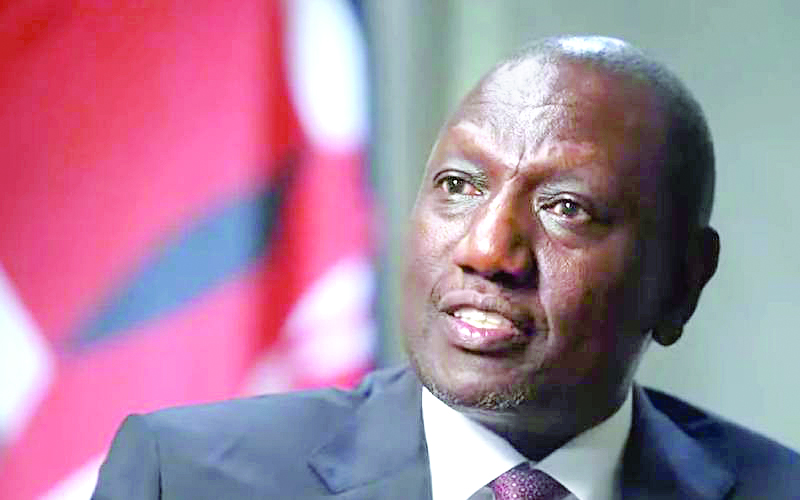Ruto pledges to grow taxes to Ksh6tr in next five years

The government has announced plans to grow the revenue collection to Sh6 trillion in the next five years as it embarks on tax reform measures.
Currently, the government collects Sh2 trillion against a budget of Sh3.3 trillion with the deficit bridged through borrowing. Speaking during a high-level meeting with manufacturers at a Nairobi hotel President William Ruto pledged to review the taxing regime to make it investor friendly.
He said a lot of taxes from the manufacturing sector are pocketed by individuals, further stifling the sectors’ contribution to gross domestic product (GDP) to just 7.2 per cent.
“We are going to reform the tax collection in the manufacturing space. KRA have very clear instructions from me about where we should go. In the next two years we should be able to grow our revenues from Sh2 trillion to Sh3 trillion and to double it in the next three years,” said Ruto.
The president’s warning on tax evasion coincided with a move by fiscal authorities to collect data on rental properties in Nairobi — a directive expected to expand the tax base and catch those who have not been disclosing income from rent.
The high-level manufacturing summit culminated in the manufacturers unveiling a roadmap to increase the sector’s contribution to the GDP to 20 per cent by 2030. Dubbed Kenya Manufacturing 20by30, the initiative seeks to maximise opportunities available to spur local industry’s growth.
The summit was held amidst concerns about the declining contribution of the sector to the GDP, which has decreased from 9.3 per cent in 2016 to 7.2 per cent in 2021, according to data from the Kenya National Bureau of Statistics.
Tax revenue Despite this, manufacturing contributes about 17.30 per cent of total tax revenue, implying that tax revenue from the sector can triple if a 20 per cent GDP contribution is achieved by 2030.
“There are huge opportunities in value addition. We have the biggest competitive advantage in the tea sector. By processing our tea, we can increase revenues through export.
Additionally, we can increase our revenues and the contribution of leather to our GDP from the current Sh15 billion to Sh75 billion annually,” Ruto added.
Out of 19 million people in the Kenya workforce, only about three million people (15 per cent) are employed in formal jobs in both public and private sectors.
The other 16 million (85 per cent) work in both formal and informal micro, small and medium enterprises (MSMEs).
Manufacturing sector Kenya Association of Manufacturers Chairman Rajan Shah said that with the manufacturing sector estimated to increase its contribution to the GDP by 1.6 per cent annually, this will translate to a rise in jobs created by manufacturing from the current 338,000 to nearly one million.
“We shall also increase employee compensation in manufacturing from Sh232 billion to Sh644 billion and increase real value-added growth from Sh876 billion to Sh5.2 trillion.”
Manufacturing is a key sector in the country’s economic development, in both its contribution to national output and exports, and for job creation. Key targets and specific goals have been set to steer industrial growth.
These include the development of Special Economic Zones, industrial parks and clusters, and niche products.
There is a wide range of direct and joint-investment opportunities in this sector, including agro-processing, garments and assembly of automotive components.












